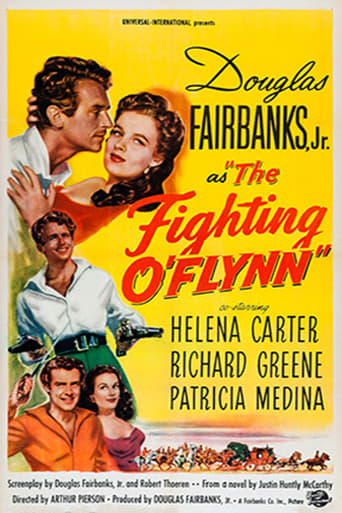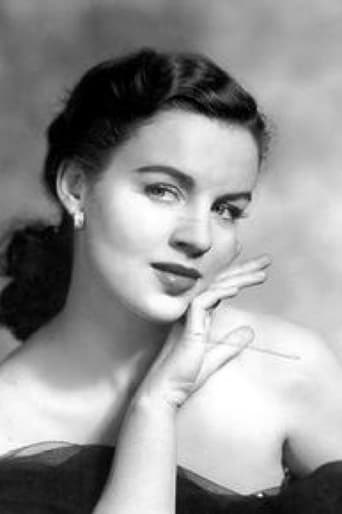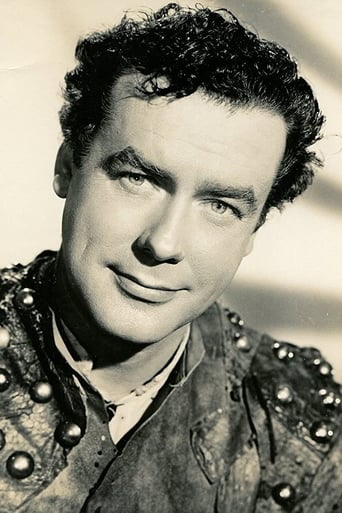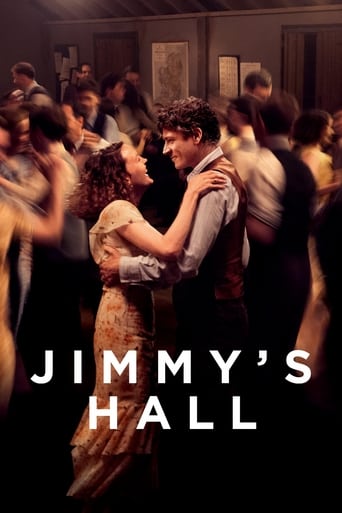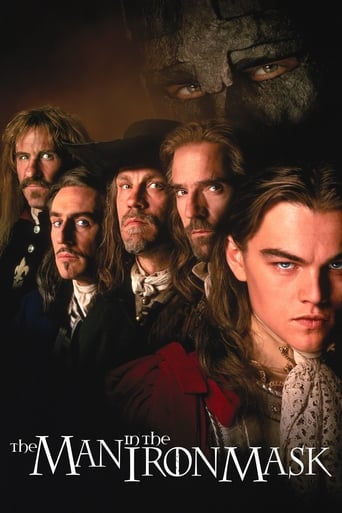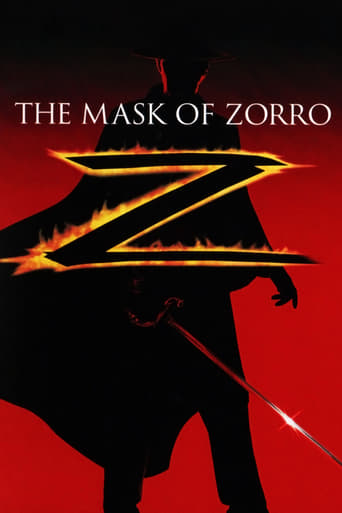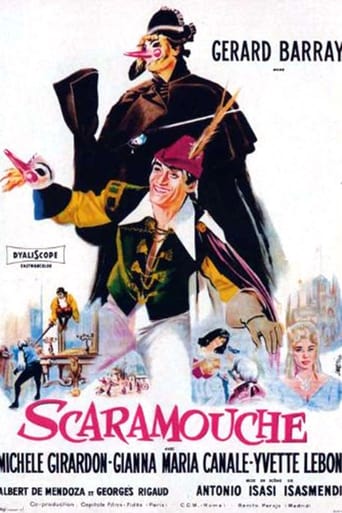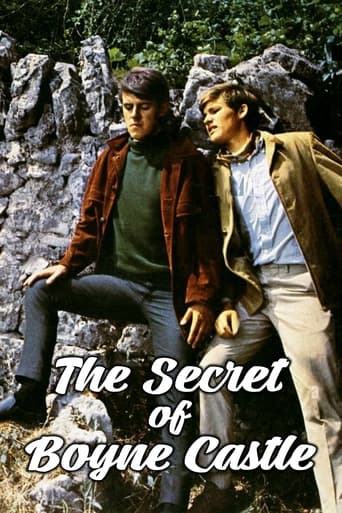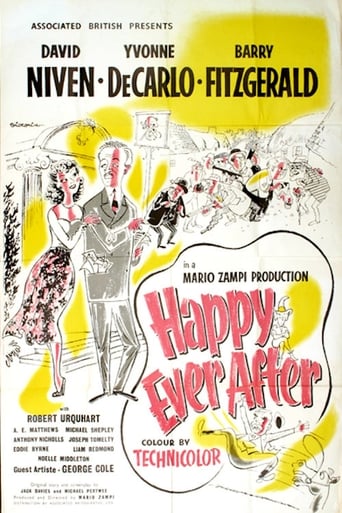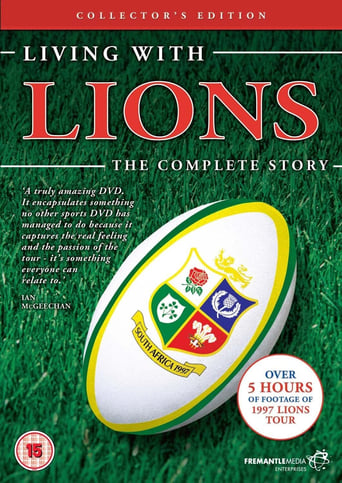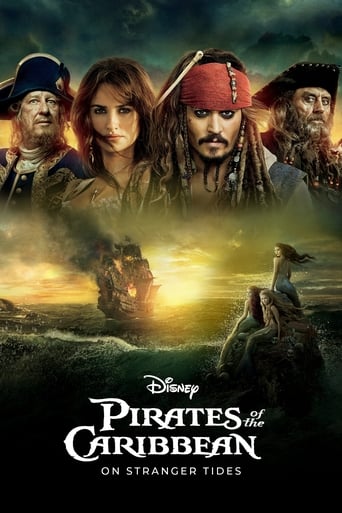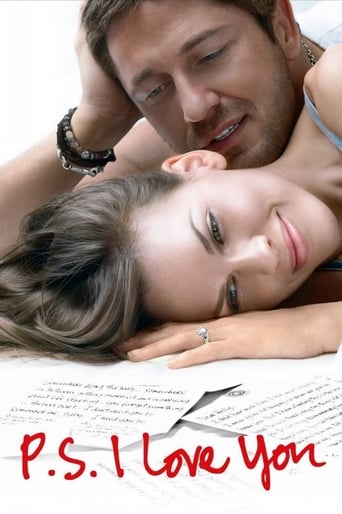The Fighting O'Flynn (1949)
A swashbuckling Irishman opposes French agents during the Napoleonic wars.
Watch Trailer
Free Trial Channels
Cast


Similar titles
Reviews
Well Deserved Praise
Surprisingly incoherent and boring
There are moments that feel comical, some horrific, and some downright inspiring but the tonal shifts hardly matter as the end results come to a film that's perfect for this time.
Story: It's very simple but honestly that is fine.
Producer: Douglas Fairbanks Jr. Copyright 8 December 1948 by Universal Pictures Co., Inc. and Fairbanks Pictures, Inc. Released by Universal-International. New York opening at Loew's Criterion: 27 February 1949. U.S. release: February 1949. U.K. release: February 1950. Australian release: 14 April 1949. 8,513 feet. 94 minutes. Alternative title: The O'Flynn.SYNOPSIS: Staged in the eighteenth century, this story tells how a dashing young Irish landowner defeats Napoleon's plans to add Ireland to his empire.COMMENT: This little-known movie has a quality we greatly admire: enormous vitality and gusto. Fairbanks' sheer exuberance is so infectious we rejoice with him as he exclaims, "Castle O'Flynn", and are dispirited with him when he finds it to be falling apart. Helena Carter makes a gorgeous leading lady, radiant in Calthrop's costumes, while Richard Greene appears particularly well cast against type as the villain of the piece. Other welcome against-type castings are Ludwig Donath (Larry Parks' father in The Jolson Story) as the sinister Hendrigg and Patricia Medina as the not over-bright accomplice. Photography, sets, costumes notch up as wholly outstanding, and there is a bright music score. Astute film editing makes it appear Fairbanks is doing his own stunts, whereas in fact the more dangerous of them are doubled by David Sharpe (e.g. vaulting between the balconies, leaping onto the drawbridge). The action is brought to a happy conclusion by a traditional climax with the de rigeur sword duel between hero and villain resolved in a most unusual manner. All told, it comes as a most entertaining relief to find a hero whose cheek is not quite matched by his skill.OTHER VIEWS: This thrill-packed swashbuckler provides all audiences with outstanding entertainment. Expertly staged and directed, with superlative photography by none other than Arthur Edeson, this is a film in which Fairbanks Jr. goes close to emulating the famous action films produced by his father. Of course Fairbanks Sr. performed just about all his own stunt-work, whereas Junior falls back on a team of experts led by David Sharpe. Not that this matters as the doubling is so skilfully done that few if any people will tumble to the fact that the daring acrobatics they see on the screen, are not all the Fairbanks scion's own. — JHR writing as George Addison.
Not a lot of people are familiar with The Fighting O'Flynn and for good reason. It's one of those Universal-owned productions of the 1940s that is, for the most part, frustratingly inaccessible today. I've only seen it because of a video recording made of the film when it was once broadcast on AMC.And that's a shame, for this light hearted costume adventure, produced by Universal-International and star Douglas Fairbanks Jr.'s own company is a surprisingly entertaining affair, chock-full of outrageous heroics and good natured humour.Fairbanks plays a charming Irish soldier-of-fortune returned to his native land from world travels at the picture's beginning in order to claim his inheritance from an uncle, Castle O'Flynn. On his way he encounters a beauty in a carriage who is besieged by what appear to be bandits.O'Flynn single handedly saves her from these scoundrels, setting up the thin story line of the film involving spies and traitors and a plot by Napoleon to set up a base in Ireland preceding an invasion of England. And just how does poor Napoleon think that he's going to succeed if he has to take on an Irish rogue like O'Flynn? It's a fairly handsome production, lensed in black-and-white, with nice sets and matte paintings of castles in the background. The cast is engaging and likable. Fairbanks, of course, is the dashing lead, and he gives a buoyant, enthusiastic performance, with a hint of an Irish accent that comes and goes.Fairbanks' acting is fairly broad at times, not entirely unlike his earlier effort as Sinbad the Sailor, undoubtedly with his father's silent acting technique kept in mind, to a degree (though he was, in fact, a far more diversified actor than his father, having performed throughout the years in various films genres, aside from adventure).It's interesting to compare Fairbanks' theatrical ever-smiling characterization to Errol Flynn's portrait of Don Juan, done about the same time. Flynn is cynical and quite subtle (a great performance in my opinion, even if he was physically past his prime), while Fairbanks is upbeat, optimistic and full of broad physical gestures.There's a fun sequence set in a tavern in which the bragging Fairbanks is challenged to a duel by the film's chief villain, a smooth, elegant traitor, played by Richard Greene. Greene, however, is fairly drunk at this moment so Fairbanks, to even the score, proceeds to consume a large amount of liquor before starting the fight.He overdoes it, however. In fact, he now sees two Richard Greenes standing before him. So Greene, to show that he, too, is a good sport about this duelling business, has some more beer, before the two start to have a fairly wild swinging saber fight. Perhaps this is a keen illustration of a duel that is not very good intentionally since both its protagonists are thoroughly looped. It also helps to cover up the fact that neither actor was particularly proficient with a sword in the first place. Only in this duel, that's okay.The Fighting O'Flynn works its way up to an over-the-top climax on a castle battlement with swords clashing, rockets firing into a night sky, and Fairbanks triumphing single-handedly over five or six opponents. All very silly, of course, but also a lot of fun. And that's what a film like this is all about. This was Fairbanks' last costume adventure, and he went out with a good one.There's a scene near the film's beginning in which Fairbanks, who often seems to be carrying a shillelagh in his hand, first sights his inherited castle. There's a low camera angle peering up at the actor as he beams a wide smile, extends both arms wide open to each side and enthusiastically proclaims, "Castle O'Flynn!!!" I smiled very broadly at this. There's no doubt that son was paying homage to his father then. It could have been right out of The Black Pirate. It's a moment that is pure Doug Fairbanks Senior.
Douglas Fairbanks Junior plays the title role in this Napoleonic era swashbuckler .He is newly returned from the wars against that cantankerous and objectionable Corsican midget ,Buonaparte,and looks forward to revisiting his old haunts in Ireland but is caught up in a plot by the villainous Viceregent ,Lord Sedgemouth (Richard Greene -for once cast as a baddie ,and doing a decent job of it too) .That is not the whole extent of Sedgemouth's depravity however for not only does he wish to facilitate a French invasion of Ireland where the French armies would be joined by Irish rebels but he has set his cap at the fair Lady Bernadetta (the winsome ,is slightly wan Helana Carter) O'Flynn's childhood sweetheart. Much derring do ensues-swords clash and there are secret trysts and much lively if a tad broad,comedy etc.is stirred into the mix Fairbanks seems to be gently and affectionately guying the genre and actors like his father and Errol Flynn are gently satirised -it is worth noting that he also had a hand in the screenplay ,along with Robert Thoeren .Colour would have been a help as would livelier direction by Arthu Pierson .Notwithstanding,this is a nice fun little movie and most people who catch it would probably enjoy the experience
This film is a semi-comical adventure film starring Douglas Fairbanks Jr. as a charming, impoverished Irish aristocrat. Fairbanks Jr. has always been sidelined in most critics views. His father was one of the superstars of Hollywood in the high silent period from 1915 to 1929, and even essayed a few interesting sound films. As the heir of the family name, Fairbanks Jr. had to make his own way. He did, but most people still think of his father first when "Fairbanks" and "movies" are mentioned. Fairbanks Jr. did have some significantly good roles in variety: he was the insane Tsar Peter III in CATHERINE THE GREAT, he graced a number of comedies like THE YOUNG AT HEART, and he could play villains (Rupert of Henzau in THE PRISONER OF ZENDA) as well as heroes (THE CORSICAN BROTHERS). But his competition was the ever available Errol Flynn, Tyrone Power, and David Niven. Two superstars and a up-and-coming actor (later Oscar winner). Fairbanks kept competing and making films (and later television) but he gradually got more involved with diplomatic affairs between the United States and Great Britain, which became his final home. It was his choice, and he did well there too - but it's a pity. He was a better than average actor. To me his best performance (aside from Rupert) is the doctor trying to flee an iron curtain country in STATE SECRET.He is at his charming best here, stumbling onto a conspiracy led by Richard Greene's Lord Sedgemonth to help a French invasion fleet get settled in Ireland and succeed in resting that country from British control. He also is trying to romance Helena Carter (a stiff aristocrat), and avoid the traps of Greene and his mistress Patricia Medina. All while keeping his charming, easy going manners. Witness the scene where he confronts the French general Otto Waldis, who catches him on a lie, but still continues drinking with him.The background of the film is true, but forgotten. In 1797 Wolfe Tone, the great Irish patriot, was in Paris trying to plot an invasion by the French revolutionary forces to free all of Ireland (Protestant and Catholic) of Britain. He was working with General Lazare Hoche and the great mutiny of the British fleet in that year would have been the best opportunity. But while France's government debated the plan, Hoche died suddenly. Within a year Napoleon Bonaparte was the leading general, and he was using resources to invade Egypt. Still a small force was sent to Ireland, but got bogged down there and were forced out by the British. Tone tried to start the timed revolt, but it was snuffed out. He was arrested but committed suicide. His leading aristocratic ally, Lord Edward Fitzgerald (the model for Greene's Lord Sedgemonth) was killed when he was being arrested. The revolt still went on, but was put down by the then Viceroy of Ireland, Charles, Marquis Cornwallis (yes, Cornwallis was far more successful in Ireland and India as a soldier and administrator than in the United States). It is this background that is behind the story of THE FIGHTING O'FLYNN.

